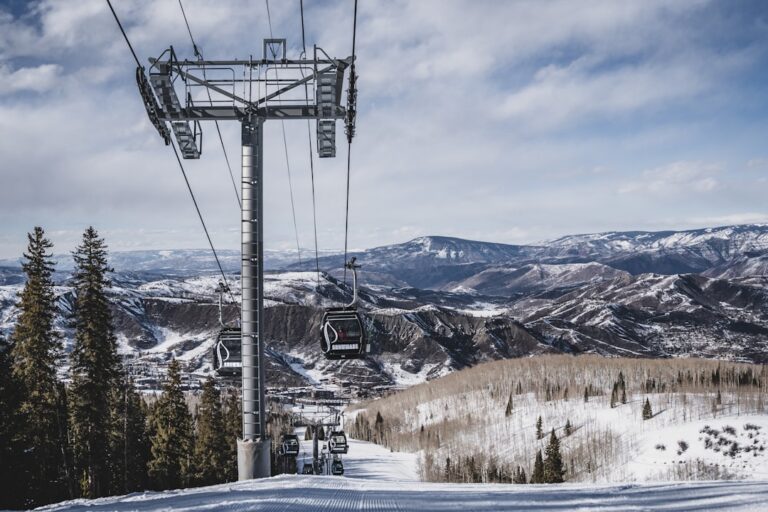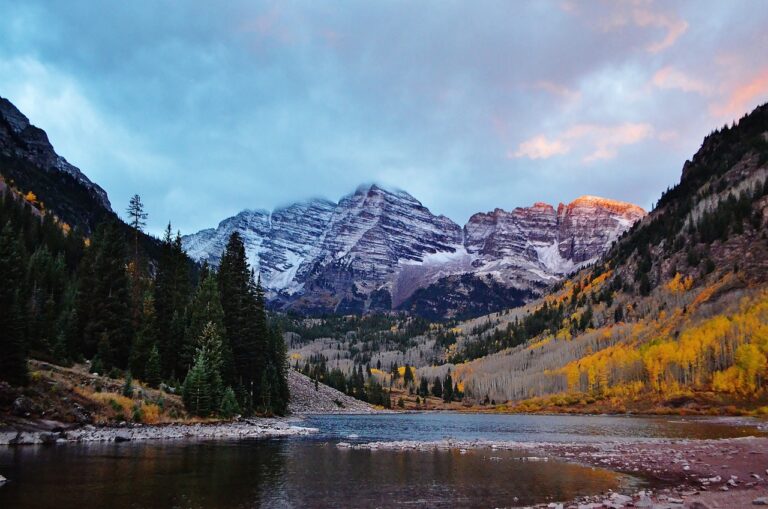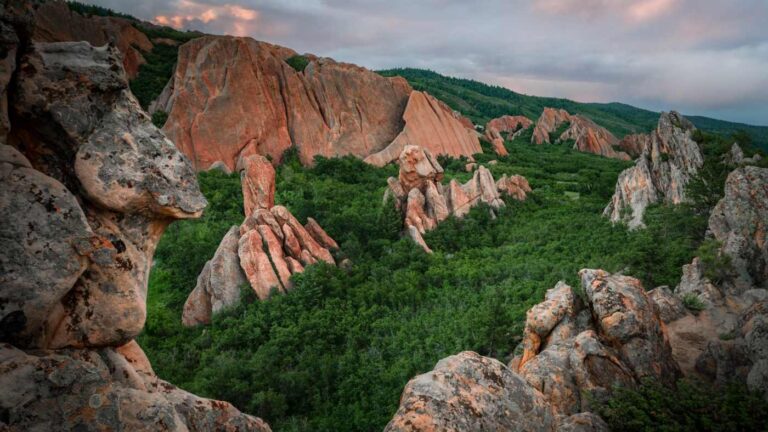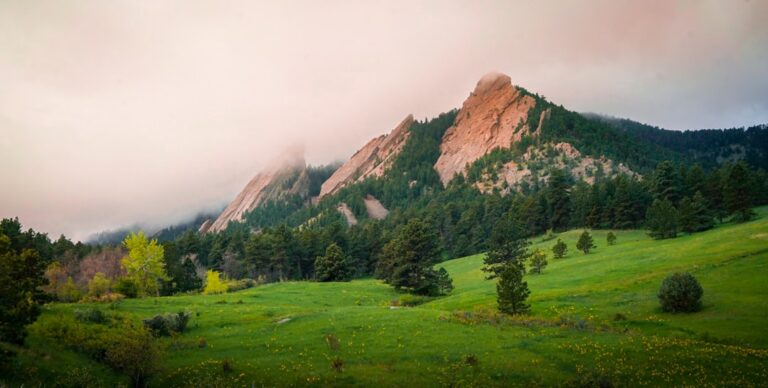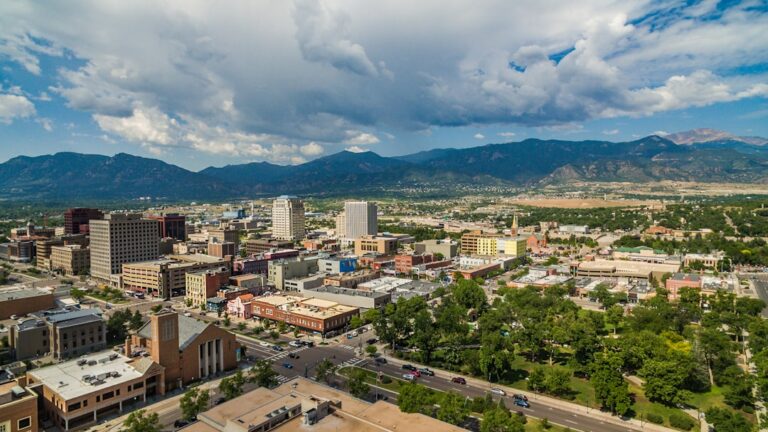The Ultimate Guide to Colorado’s National Parks: Plan Your Dream Road Trip
Colorado, a land of towering peaks, ancient canyons, and sprawling dunes, is a haven for nature lovers and adventure seekers alike.
Its four national parks, each with its distinct personality, showcase the state’s diverse landscapes and offer unforgettable experiences.
Whether you’re drawn to the majestic Rocky Mountains, the mysterious cliff dwellings of Mesa Verde, the otherworldly dunes of Great Sand Dunes, or the dramatic depths of the Black Canyon of the Gunnison, a Colorado National Parks road trip promises a journey through some of the most breathtaking scenery in the United States.
Get ready to lace up your hiking boots, pack your camping gear, and embark on an adventure of a lifetime!
Exploring Colorado’s Four National Parks:
Get ready to embark on a journey through Colorado’s four national parks, each a testament to the state’s diverse natural beauty and a haven for outdoor enthusiasts.
From towering peaks to ancient ruins and otherworldly dunes, these parks offer a wealth of experiences that will leave you in awe.
Rocky Mountain National Park: A Hiker’s Paradise
Rocky Mountain National Park, a crown jewel of the National Park System, is a haven for outdoor enthusiasts and nature lovers.
Its breathtaking scenery, featuring towering mountain peaks, pristine alpine lakes, and abundant wildlife, draws visitors from around the world.
With over 300 miles of hiking trails, ranging from leisurely strolls to challenging climbs, Rocky Mountain National Park offers something for every hiker, from families with young children to seasoned mountaineers.
Trail Ridge Road:
Experience the thrill of driving along Trail Ridge Road, the highest continuous paved road in the United States.
As you ascend to over 12,000 feet, you’ll be rewarded with panoramic vistas of the surrounding peaks, valleys, and alpine tundra.
Be sure to stop at the many scenic overlooks along the way to soak in the breathtaking beauty.
Bear Lake:
This picturesque alpine lake, nestled amidst towering pines, is a popular destination for hikers and photographers.
The easy loop trail around the lake is perfect for families, while more ambitious hikers can venture further on trails leading to Emerald Lake, Dream Lake, and beyond.
Moraine Park:
Moraine Park, an expansive meadow, framed by majestic mountains, offers stunning views and abundant wildlife viewing opportunities.
Keep an eye out for elk, deer, and bighorn sheep grazing in the meadows or venturing into the forests.
The park also offers a variety of ranger-led programs, providing insights into the park’s natural and cultural history.
Other Activities:
In addition to hiking, Rocky Mountain National Park offers a plethora of other outdoor activities.
Set up camp in one of the park’s many campgrounds, cast a line in a pristine mountain stream, or simply relax and enjoy the serenity of nature.
With its diverse landscapes and endless opportunities for exploration, Rocky Mountain National Park is a true testament to the beauty and wonder of the Colorado Rockies.
Tip:
During peak season, consider visiting the park early in the morning or on weekdays to avoid crowds.
Also, be sure to check the weather forecast and dress in layers, as temperatures can fluctuate significantly at higher elevations.
Great Sand Dunes National Park and Preserve: A Desert Oasis in the Rockies
Experience the unexpected in the heart of Colorado at Great Sand Dunes National Park and Preserve.
This extraordinary landscape, featuring the tallest sand dunes in North America, rises majestically from the San Luis Valley, creating a mesmerizing contrast against the backdrop of the snow-capped Sangre de Cristo Mountains.
Far more than just a desert, the park encompasses a surprising diversity of ecosystems, including grasslands, wetlands, forests, and alpine lakes.
This variety of habitats supports a rich array of wildlife, from pronghorn and elk to black bears and a multitude of bird species.
For those seeking adventure, the park offers a unique playground.
Slide down the dunes on a sandboard or sled, hike to the top of High Dune for panoramic views, or explore the backcountry on the Medano Pass Primitive Road.
The park’s trails lead to hidden gems like Zapata Falls and Medano Lake, providing opportunities for hiking, backpacking, and even fishing in the high-altitude waters.
Star Dune: Conquer the Tallest Sand Dune in North America
Rising a staggering 750 feet from its base, the Star Dune is the undisputed champion of sand dunes in North America.
Its massive presence dominates the landscape of Great Sand Dunes National Park, beckoning adventurous souls to conquer its slopes.
Hiking to the summit of Star Dune is a challenging but rewarding endeavor, offering panoramic views of the entire dunefield and the surrounding mountains.
The sense of accomplishment upon reaching the top is unmatched, and the experience of sliding or sandboarding back down is pure exhilaration.
International Dark Sky Park: Stargazing at Its Finest
As the sun sets and darkness descends, Great Sand Dunes National Park transforms into a stargazer’s paradise.
The park’s remote location and lack of light pollution create an ideal environment for observing the night sky in all its glory.
Designated as an International Dark Sky Park, Great Sand Dunes offers unparalleled opportunities to witness the Milky Way, constellations, and even meteor showers, making it a must-visit destination for anyone who loves to marvel at the cosmos.
Tips for Visiting:
- Timing is key: Medano Creek, a seasonal stream that flows at the base of the dunes, is typically at its peak in late spring and early summer. Check the park’s website for current conditions.
- Prepare for the elements: The dunes can be hot and exposed during the day, so bring plenty of water, sunscreen, and a hat. Evenings can get chilly, so pack layers.
- Footwear matters: Hiking boots are recommended for exploring the trails, but sandals or bare feet are best for navigating the sand.
- Leave No Trace: Help preserve this fragile ecosystem by staying on designated trails and packing out all trash.
Great Sand Dunes National Park and Preserve is a truly unique and awe-inspiring destination.
Whether you’re seeking adventure, serenity, or simply a chance to witness the power and beauty of nature, this park will leave a lasting impression.
Mesa Verde National Park: A Journey into Ancient History
Step back in time at Mesa Verde National Park, where the remarkable legacy of the Ancestral Pueblo people comes to life.
This UNESCO World Heritage Site, nestled in the southwestern corner of Colorado, is renowned for its exceptionally well-preserved cliff dwellings, offering a glimpse into the lives of these ancient inhabitants.
Carved into the cliffs of the Mesa Verde plateau, these remarkable structures stand as a testament to the ingenuity and resilience of the Ancestral Puebloans.
These dwellings, built between 600 and 1300 AD, served as homes, storage areas, and ceremonial spaces for these resourceful people.
Exploring these ancient sites allows visitors to connect with the past, marveling at the architectural feats achieved with limited tools and resources, and gaining a deeper appreciation for the rich cultural heritage of the Ancestral Puebloans.
Mesa Verde’s significance extends far beyond its cliff dwellings.
The park encompasses a vast landscape of mesas, canyons, and forests, providing habitat for a diverse array of plants and animals.
Hiking trails wind through the park, offering breathtaking views and opportunities to encounter wildlife like deer, elk, and a variety of birds.
Key Attractions
- Cliff Palace: The largest cliff dwelling in North America, Cliff Palace is a marvel of ancient architecture, featuring over 150 rooms and 23 kivas (ceremonial structures). Take a ranger-led tour to explore this fascinating site and learn about the daily lives of its former inhabitants.
- Chapin Mesa Archeological Museum: Delve deeper into the history and culture of the Ancestral Pueblo people at this informative museum. Exhibits showcase artifacts, tools, and reconstructions, providing a glimpse into the lives of those who built and inhabited these remarkable dwellings.
Activities and Experiences
- Guided Tours: Join a ranger-led tour to gain a deeper understanding of the park’s history and significance. These tours provide access to some of the most impressive cliff dwellings and offer insights into the lives of the Ancestral Pueblo people.
- Hiking: Explore the park’s diverse trails, which wind through canyons, mesas, and forests. Several trails offer stunning views of the cliff dwellings and the surrounding landscape.
- Learning about Ancient Cultures: Immerse yourself in the rich cultural heritage of the Ancestral Puebloans through exhibits, ranger talks, and educational programs.
Tip:
Be sure to check the park’s website for current tour schedules and availability, as some tours require advance reservations.
Also, wear comfortable shoes and bring plenty of water, especially if you plan on hiking during the warmer months.
Black Canyon of the Gunnison National Park: Awe-Inspiring Depths
Prepare to be humbled by the sheer scale and grandeur of the Black Canyon of the Gunnison National Park.
As its name implies, this geological wonder showcases some of the steepest cliffs, oldest rock, and most dramatic canyons in North America.
Over millions of years, the relentless Gunnison River has carved its way through ancient rock, creating a breathtaking chasm that plunges over 2,000 feet in some places.
The interplay of light and shadow within the canyon’s depths creates an ever-changing spectacle that’s both awe-inspiring and humbling.
Activities
For those seeking adventure, the Black Canyon offers challenging hiking trails that descend into the canyon’s depths, revealing hidden waterfalls, unique rock formations, and a sense of solitude rarely found in other parks.
However, it’s important to be prepared for strenuous hikes and respect the canyon’s rugged terrain.
If you prefer a more leisurely experience, the park offers scenic drives along both the North and South Rims, providing breathtaking vistas of the canyon without the exertion of hiking.
Each rim offers its own unique perspective, with the South Rim being more accessible year-round and the North Rim providing a more remote and rugged experience.
International Dark Sky Park
As day turns to night, the Black Canyon reveals another of its treasures: the starlit sky.
Designated as an International Dark Sky Park, the park offers unparalleled opportunities for stargazing.
The absence of light pollution allows for breathtaking views of the Milky Way, constellations, and even meteor showers.
Whether you’re a seasoned astronomer or simply enjoy marveling at the cosmos, the Black Canyon’s night sky is sure to leave a lasting impression.
Tips for Visiting:
- Check Road Conditions: The North Rim Road is typically closed during the winter months due to snow and ice. Be sure to check the park’s website for current road conditions and closures before your visit.
- Pack Essentials: The canyon can get hot and exposed, even at higher elevations. Bring plenty of water, sunscreen, and a hat. If you’re hiking, be sure to wear sturdy footwear and pack layers, as temperatures can fluctuate.
- Respect the Environment: Practice Leave No Trace principles to help preserve the park’s natural beauty for future generations.
The Black Canyon of the Gunnison National Park is a true testament to the power and beauty of nature.
Whether you’re seeking adventure, serenity, or simply a chance to witness the grandeur of the Colorado landscape, this park will leave you in awe.
Planning Your Colorado National Parks Road Trip
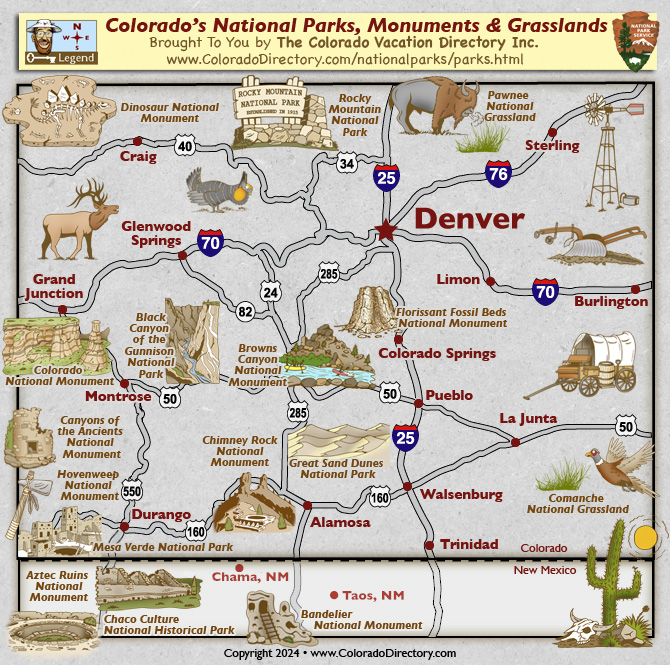
Photo by : Colorado Directory
- Rocky Mountain National Park: Located in north-central Colorado, near the towns of Estes Park and Grand Lake.
- Great Sand Dunes National Park and Preserve: Situated in southern Colorado, approximately a 5-hour drive from Rocky Mountain National Park.
- Mesa Verde National Park: Nestled in the southwestern corner of Colorado, about a 6-hour drive from Great Sand Dunes National Park.
- Black Canyon of the Gunnison National Park: Located in western Colorado, roughly a 3.5-hour drive from Mesa Verde National Park.
Road Trip Itinerary Suggestions
Option 1: 7-Day Colorado National Parks Loop
- Day 1-3: Rocky Mountain National Park
- Explore the park’s diverse trails, from Bear Lake to Emerald Lake.
- Drive along the scenic Trail Ridge Road.
- Enjoy camping or stay in the nearby towns of Estes Park or Grand Lake.
- Day 4-5: Great Sand Dunes National Park and Preserve:
- Hike or sandboard on the dunes.
- Explore Medano Creek (if flowing) or hike to Zapata Falls.
- Stargaze under the pristine night sky.
- Day 6: Mesa Verde National Park:
- Take a ranger-led tour of Cliff Palace or other cliff dwellings.
- Visit the Chapin Mesa Archeological Museum.
- Hike the trails and enjoy the scenic views.
- Day 7: Black Canyon of the Gunnison National Park
- Drive along the South Rim and stop at the various overlooks.
- Hike a trail if time and fitness level allow.
- Stargaze at night if conditions are favorable.
Option 2: 4-Day Weekend Getaway
- Focus on two parks that are closer together, such as Rocky Mountain and Great Sand Dunes, or Mesa Verde and Black Canyon of the Gunnison.
- Spend more time exploring each park in depth.
Option 3: 10+ Day Extended Exploration
- Include additional stops at nearby state parks or national monuments, such as Colorado National Monument or Curecanti National Recreation Area.
- Allow more time for leisurely hikes, scenic drives, and other activities.
Incorporating Nearby Attractions
- Near Rocky Mountain National Park: Visit the charming town of Estes Park, explore the Stanley Hotel (inspiration for The Shining), or take a scenic drive on the Peak to Peak Highway.
- Near Great Sand Dunes National Park: Check out the Zapata Falls or the quirky town of Crestone.
- Near Mesa Verde National Park: Explore the ancient ruins at Hovenweep National Monument or the scenic beauty of Canyons of the Ancients National Monument.
- Near Black Canyon of the Gunnison National Park: Visit the historic town of Gunnison or take a scenic drive along the West Elk nLoop.
Tips for Visiting Colorado National Parks: Make the Most of Your Adventure
Planning is key to a successful and enjoyable trip to Colorado’s national parks.
Here are some practical tips to help you make the most of your experience:
Reservations:
- Campgrounds: Reservations for campgrounds are highly recommended, especially during peak season (summer and fall). You can make reservations up to six months in advance through the Colorado Parks and Wildlife reservation system.
- Timed Entry Permits: Rocky Mountain National Park requires timed entry permits for certain areas during peak season. Be sure to check the park’s website for current requirements and make reservations in advance.
Entrance Fees and Passes:
- Entrance Fees: Each national park has its own entrance fee, typically ranging from $25 to $35 per vehicle. Consider purchasing an annual pass if you plan on visiting multiple parks.
- America the Beautiful Pass: This annual pass provides access to all national parks and other federal recreation sites for a flat fee. It’s a great value if you plan on visiting multiple parks throughout the year.
Packing Essentials:
- Layers: Colorado’s weather can change quickly, even in the summer. Pack layers so you can adjust to varying temperatures.
- Hiking Boots or Shoes: Sturdy footwear is essential for exploring the parks’ trails.
- Rain Gear: Be prepared for rain showers, especially in the mountains.
- Sunscreen and Hat: The high altitude sun can be intense, even on cloudy days.
- Insect Repellent: Protect yourself from mosquitoes and other biting insects.
- Water Bottle and Snacks: Stay hydrated and fueled during your adventures.
- First-Aid Kit: Be prepared for minor injuries or ailments.
- Camera: Capture the stunning scenery and wildlife encounters.
Respecting Wildlife:
- Observe from a Distance: Maintain a safe distance from all wildlife. Do not approach or feed any animals.
- Store Food Properly: Keep all food and scented items stored securely in bear-proof containers or canisters, especially when camping.
- Be Aware of Your Surroundings: Pay attention to your surroundings and be alert for wildlife, especially when hiking or camping.
Seasonal Considerations and Road Closures:
- Summer: Peak season, with warm temperatures and crowds. Expect busy trails and campgrounds, and be prepared for afternoon thunderstorms in the mountains.
- Fall: A beautiful time to visit, with cooler temperatures and vibrant fall foliage. Some high-elevation roads may close due to snow in late fall.
- Winter: Some parks, especially Rocky Mountain National Park, offer winter activities like snowshoeing and cross-country skiing. However, many roads and trails may be closed due to snow and ice.
- Spring: A quieter time to visit, with wildflowers blooming and wildlife emerging from winter. Be prepared for mud and snowmelt on trails, especially at higher elevations.
- Road Closures: Always check the park’s website or call the visitor center before your trip for current road conditions and closures.
By following these tips and respecting the natural environment, you can ensure a safe and enjoyable experience in Colorado’s national parks. Happy exploring!
Conclusion: Your Colorado Adventure Awaits
From the majestic peaks of Rocky Mountain National Park to the otherworldly dunes of Great Sand Dunes, Colorado’s national parks offer a tapestry of unforgettable experiences.
Whether you’re seeking adventure, tranquility, or a deeper connection with nature, these natural treasures will leave you in awe.
So, what are you waiting for?
Pack your bags, hit the open road, and embark on your own Colorado national parks road trip.
Discover the magic of these breathtaking landscapes, encounter diverse wildlife, and create memories that will last a lifetime.
Live life outside and experience the wonders of Colorado’s national parks!

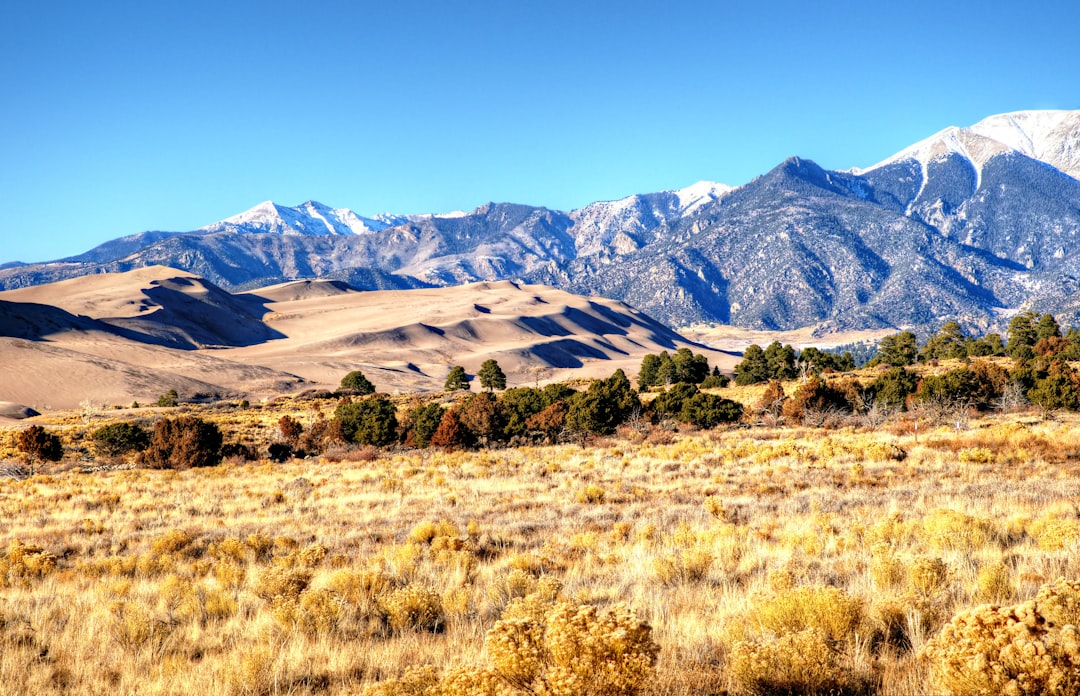
![Rocky Mountain National Park [Explore]](https://live.staticflickr.com/65535/51045317817_0f28d26dcd_z.jpg)

















![Stanley Hotel [Estes Park, CO]](https://live.staticflickr.com/5303/5614578672_32c4032c52_z.jpg)






